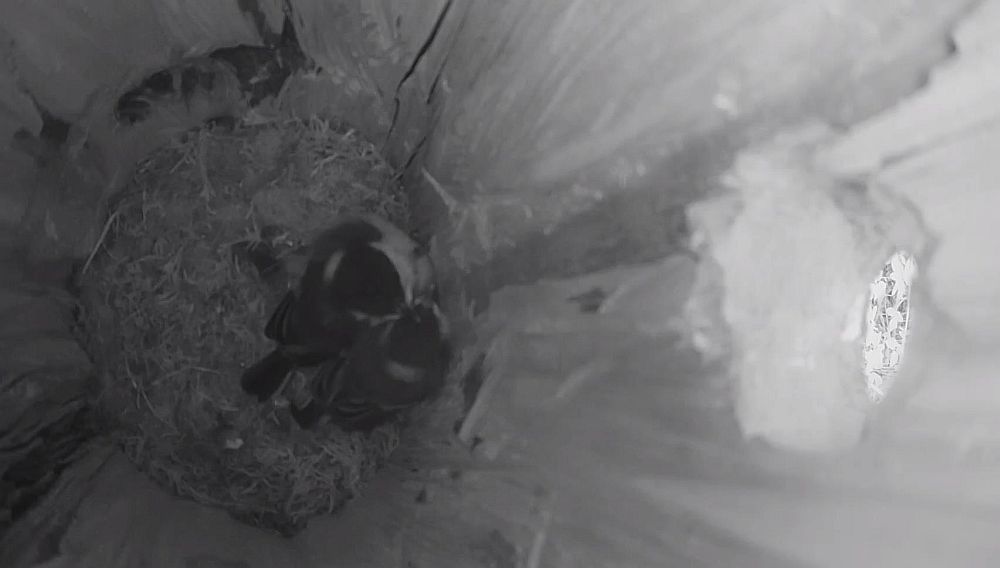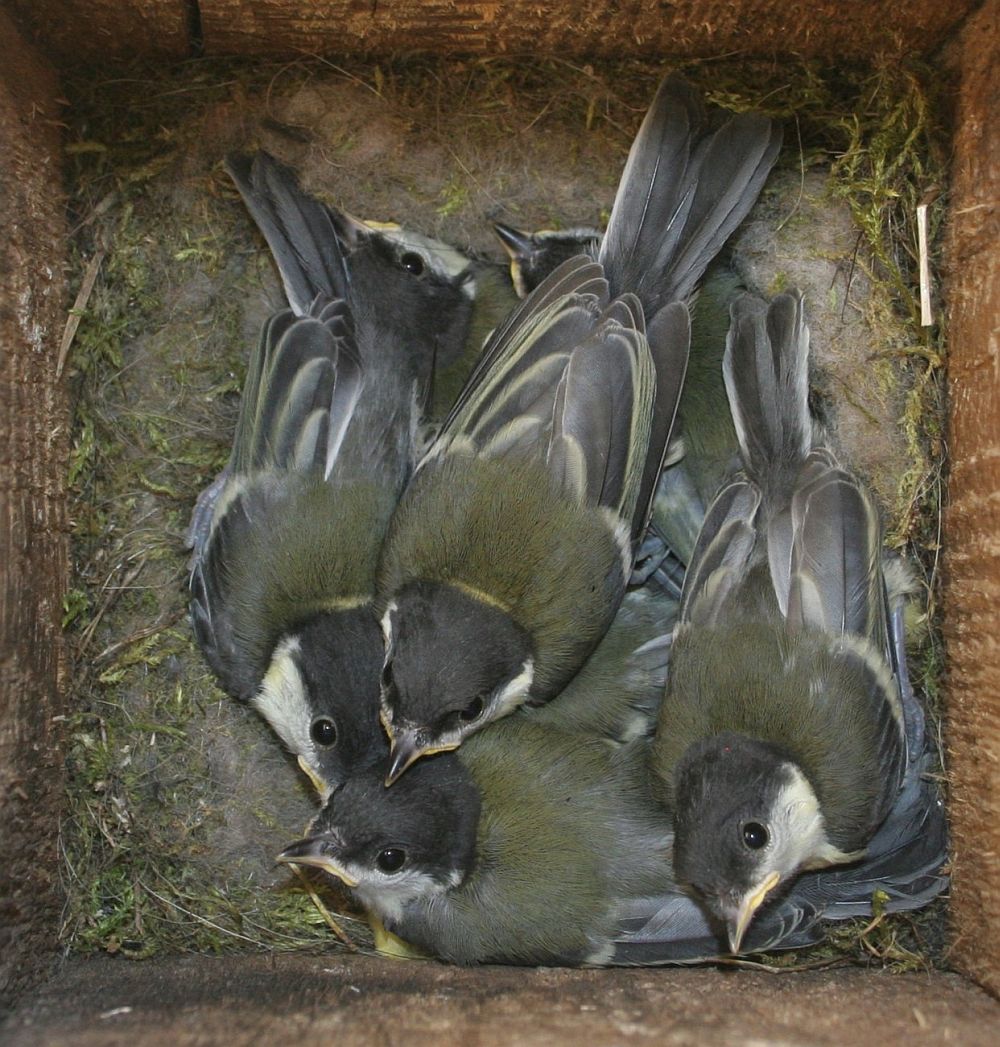What will be the fate of the great tit chicks still in the nest?
Linnuvaatleja news, www.linnuvaatleja.ee
This morning [Saturday] the six largest chicks left the webcam nest. The oldest of them were 20 days old. The two smallest however, 3-4 days younger than the others, remained in the nest. What will be the fate of the chicks left behind ?

At 10.40 two chicks were still in the nest



